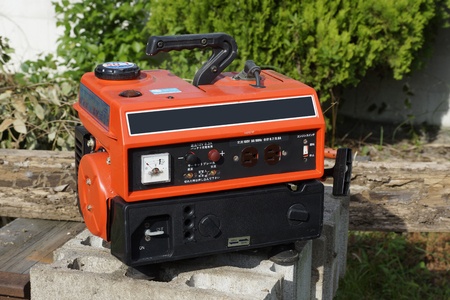 With winter projected to bring unseasonably cold temperatures across much of the United States, homeowners and renters should prepare now for possible power outages by inspecting and tuning up portable generators.
With winter projected to bring unseasonably cold temperatures across much of the United States, homeowners and renters should prepare now for possible power outages by inspecting and tuning up portable generators.
"Don't wait until it is zero degrees and the power goes out," says Dan Roche, director of marketing for Briggs & Stratton's Portable Power and Cleaning Systems division. "Because portable generators are not typically used unless the electricity goes off, it is important that users inspect, tune up and are prepared to safely use their generator before a power outage occurs."
To ensure your portable generator is operating efficiently, Briggs & Stratton recommends:
1. Thinking about fuel. If you have your generator in storage and do not plan to use it within 30 days, stabilize the gas with fuel stabilizer. Add the stabilizer according to package directions and run your generator for a few minutes to circulate the solution through the carburetor. This is also a good time to rotate your fuel supply. Pour the gas from your stored fuel into the car and fill up the gas cans with fresh fuel, again adding fuel stabilizer for storage.
2. Changing generator oil. Make sure your portable generator has enough oil to keep it running smoothly. Many generators shut down automatically to protect the engine if the level gets too low. To keep yours protected and ready for a winter storm or home emergency, check the oil level whenever you add fuel by referencing the dipstick and filling to the full marker. Keep a few quarts of oil on hand in case of emergencies. Refer to your engine manual for exact specifications.
3. Inspecting replaceable parts regularly. In addition to the engine oil, check out the carburetor, air filter, fuel filter and spark plug regularly according to the portable generator owner manual. Maintain your generator according to the maintenance schedule for peak performance and safety.
4. Getting a transfer switch. A manual transfer switch is the best way to use a portable generator for emergency use, as it connects directly to a home's electrical system to power furnaces, refrigerators, pumps and more. When engaged, a manual transfer switch isolates the generator power from the incoming utility lines, which is important to not endanger utility line workers and ensure the generator is not overloaded. A dedicated cable connects the generator to the transfer switch through an inlet box. This method protects the integrity of a home's electrical wiring, safeguards the generator and eliminates running multiple extension cords from the generator into the house.
5. Knowing how, where and with what. Keep a flashlight handy so you will be able to find your way to your generator and learn to start, adjust and shut off your generator to make sure you are familiar with how you will operate it when there is a power outage. Running your generator occasionally will not only help you learn to use it, but will also keep the engine well-lubricated.
Briggs & Stratton also encourages homeowners to think about where you will place the generator when you do need to use it. Do not run a generator inside homes, garages, crawlspaces, basements, sheds or similar areas, even when using fans or opening doors and windows for ventilation. Deadly levels of carbon monoxide (CO) can quickly build up in these spaces and can linger for hours, even after the generator has shut off. Place the unit outside and far from doors, windows, vents and other openings that could allow CO to come indoors or be drawn into potentially occupied spaces. Direct the engine exhaust away from potentially occupied spaces.
Source: Briggs & Stratton Corporation







